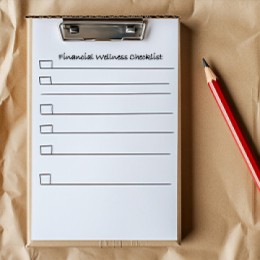
Budgeting and How to Put it into Practice
Creating a budget is a crucial step toward financial stability, but the real challenge lies in putting it into practice. It's not just about jotting down numbers on a spreadsheet or putting them in an app; it's about cultivating mindful habits and making informed financial decisions.
Here are ten practical tips to help you easily apply a budget to your everyday life.
- Understand Your Financial Goals:
Just like a trip, if you outline your journey from point A to B, then your trip typically goes smoothly. The same goes for your finances. Where are you now and where do you want to be when it comes to your financial goals? Whether it's saving for a vacation, paying off debt, or investing for the future, having clear goals will help guide you.
- Track Your Expenses:
Keep a detailed record of your daily expenses for at least a month to understand where your money is going. Then filter everything into categories and identify areas where you can cut back.
- Create a Realistic Budget:
Develop a budget that aligns with your income, expenses, and goals. Be realistic about your spending habits and allocate funds for essential categories like housing, utilities, groceries, and savings. You’re not doing yourself any favors if you’re lying to yourself about where your money is going.
- Prioritize Saving:
Treat savings as a non-negotiable expense. Set a goal on a specific amount you want to set aside before allocating funds for spending. This habit will help you build an emergency fund and work towards your long-term financial goals.
- Control Impulse Spending:
Say no to mindless spending. Impulse purchases can quickly upset your budget and are often what leads to mismanaging your money. Implement a "cooling-off" period for non-essential purchases. Wait 24 hours before buying something on a whim to determine if you realize it’s a want or a need, later. Or, you can go as far as removing your saved card information for online payment; it gives you a period to consider if you want to spend your money on that purchase.
- Give “Cash Envelopes” a Go:
If you really need to buckle down, try the cash envelope system. Allocate a specific amount of cash to different spending categories each month. Once the cash is gone, you're done spending in that category. This approach helps you control your expenses effectively.
- Regularly Check-In:
Life is ever-changing. Regularly reviewing your financial situation and adjusting your budget as needed is a good habit to get in.
- Make it Automatic:
Avoid late fees and stay on top of your bills by setting up automatic payments. This ensures that expenses are covered on time, reducing financial stress, and improving your credit score.
- Get an Accountability Buddy:
Share your budgeting goals with a friend, family member, or partner who can provide support and hold you accountable. Discussing your financial journey with someone else adds an extra layer of commitment.
- Celebrate Milestones:
Acknowledge and celebrate your financial wins, no matter how small. Whether it's paying off a credit card, reaching a savings milestone, or sticking to your budget for a month, recognizing your progress reinforces positive financial habits.
Implementing a budget is an ongoing process that requires dedication and adaptability. It starts with understanding your goals, tracking expenses, and applying these practical tips to your daily life. Remember, financial success is a journey, not a destination.











0 comments